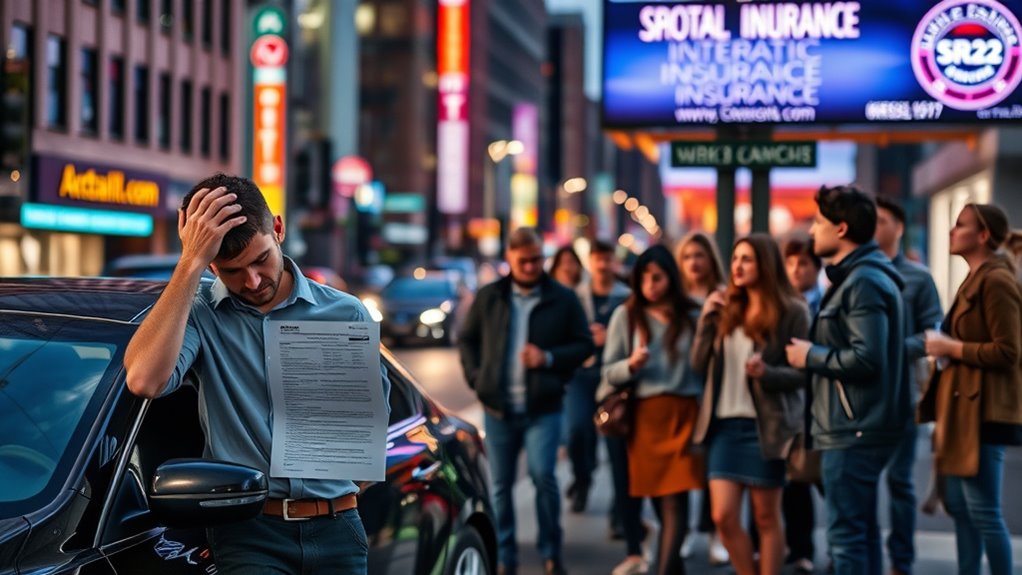Why Are There Misconceptions About SR22 Insurance?
Isn't it surprising how easily misinformation can take root in our understanding of complex topics like SR22 insurance? Many people confuse it with a separate policy rather than an endorsement of existing coverage. This misunderstanding, compounded by the stigma surrounding high-risk driving, often leads to the belief that SR22 is prohibitively expensive. These misconceptions can create significant hurdles for individuals trying to fulfill their SR22 obligations and navigate their insurance options effectively. What's the real story behind these beliefs?
While many drivers are aware of the term "SR22 insurance," it's essential to clarify that this isn't a standalone policy but rather a form that confirms your liability coverage. This distinction is often overlooked, leading to confusion about what SR22 really entails. Many people mistakenly believe that they need to purchase a separate insurance policy, when in fact, SR22 is simply an endorsement added to an existing auto insurance policy. To obtain an SR22, you must maintain a certain level of auto insurance coverage, which is where the misconceptions typically begin.
Another common misunderstanding is that you must own a vehicle to require an SR22 form. In reality, you can still need this form even if you don't own a car. Non-owner policies are available for individuals who drive rented or borrowed vehicles but still need to comply with SR22 requirements. These types of policies provide liability coverage without the necessity of vehicle ownership, making them often more affordable than traditional policies. The key factor is demonstrating financial responsibility, regardless of whether you own a vehicle.
You can require an SR22 form even without owning a vehicle, thanks to non-owner policies that ensure liability coverage.
Cost is another area where misconceptions abound. Many individuals assume SR22 insurance comes with a hefty price tag. This perception is usually due to the higher insurance requirements that accompany SR22. However, affordable options do exist. By comparison shopping and negotiating with insurers, you can find cost-effective SR22 plans that meet your needs. Specialized insurance companies often cater to high-risk drivers and offer competitive rates. Additionally, completing defensive driving courses may qualify you for discounts on your SR22 policy, further alleviating concerns about affordability.
People also tend to misunderstand the duration of SR22 requirements. It's significant to note that these requirements aren't indefinite; they typically range from two to three years, depending on the state. Maintaining the required insurance coverage for the entire duration is necessary. If you fail to comply, you risk license suspension, which can lead to further complications. Some states impose longer or shorter periods, so it's essential to understand the specifics in your location.
Another misconception is around cancellation and compliance. Cancelling an SR22 policy prematurely can result in serious repercussions, including license suspension. You must maintain the coverage for as long as the state mandates, usually several years. Your insurance company will notify the state of any lapse in coverage, which can lead to penalties. Consequently, staying compliant with SR22 requirements is fundamental to avoiding further complications.
Finally, moving to a different state doesn't eliminate your SR22 requirement. If you relocate, you must verify your insurance provider is licensed in your new state and maintain your SR22 form. Insurance companies vary in their ability to handle multi-state requirements, so careful selection is key. Not all policies cover all states, making it essential to research your options thoroughly. By addressing these misconceptions, you can navigate the SR22 landscape more effectively and avoid unnecessary pitfalls. Additionally, understanding that SR22 insurance is a form required for high-risk drivers can help clarify its purpose and importance.
Conclusion
In summary, understanding SR22 insurance is essential to dispel common misconceptions. It's not a standalone policy but an endorsement to your existing coverage, and it doesn't have to break the bank. By clarifying these points, you can navigate the SR22 process without getting lost in a maze of misunderstandings. Remember, knowledge is power, and arming yourself with accurate information can turn a challenging requirement into a manageable obligation.


